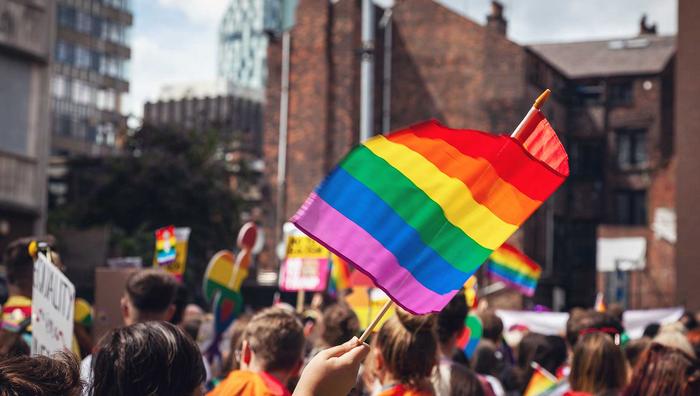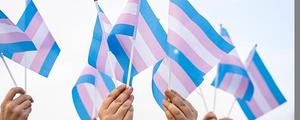WASHINGTON, D.C. -- LGBTQ+ identification in the U.S. continues to grow, with 7.6% of U.S. adults now identifying as lesbian, gay, bisexual, transgender, queer or some other sexual orientation besides heterosexual. The current figure is up from 5.6% four years ago and 3.5% in 2012, Gallup’s first year of measuring sexual orientation and transgender identity.
These results are based on aggregated data from 2023 Gallup telephone surveys, encompassing interviews with more than 12,000 Americans aged 18 and older. In each survey, Gallup asks respondents whether they identify as heterosexual, lesbian, gay, bisexual, transgender or something else. Overall, 85.6% say they are straight or heterosexual, 7.6% identify with one or more LGBTQ+ groups, and 6.8% decline to respond.
Bisexual adults make up the largest proportion of the LGBTQ+ population -- 4.4% of U.S. adults and 57.3% of LGBTQ+ adults say they are bisexual. Gay and lesbian are the next-most-common identities, each representing slightly over 1% of U.S. adults and roughly one in six LGBTQ+ adults. Slightly less than 1% of U.S. adults and about one in eight LGBTQ+ adults are transgender. The most commonly volunteered LGBTQ+ identities are pansexual and asexual, mentioned by less than 2% of LGBTQ+ adults each.
LGBTQ+ Growth Tied to Higher Identification Among Younger Adults
Increases in LGBTQ+ identification in recent years have occurred as members of Generation Z and the millennial generation have entered adulthood. Adults in these younger generations are far more likely than those in older generations to identify as LGBTQ+.
Overall, each younger generation is about twice as likely as the generation that preceded it to identify as LGBTQ+. More than one in five Gen Z adults, ranging in age from 18 to 26 in 2023, identify as LGBTQ+, as do nearly one in 10 millennials (aged 27 to 42). The percentage drops to less than 5% of Generation X, 2% of baby boomers and 1% of the Silent Generation.
Bisexuality is the most common LGBTQ+ status among Generation Z, millennials and Generation X. Fifteen percent of all Generation Z adults -- representing more than two-thirds of those with an LGBTQ+ identification -- are bisexual.
In the older generations, LGBTQ+ individuals are more likely, or equally as likely, to say they are gay or lesbian than bisexual.
LGBTQ+ Identification More Common Among Women
Women are nearly twice as likely as men to identify as LGBTQ+, 8.5% versus 4.7%. Bisexuality is the most common form of LGBTQ+ identification among women, while men are equally likely to identify as bisexual or gay.
Women are more likely than men to have an LGBTQ+ identification in the three youngest generations, especially in Generation Z and the millennial generation. Close to three in 10 Gen Z women, 28.5%, identify as LGBTQ+, compared with 10.6% of Gen Z men. Among millennials, 12.4% of women and 5.4% of men have an LGBTQ+ identification.
More than one in five Gen Z women identify as bisexual, as do 9% of millennial women. Gen Z men are more likely to identify as bisexual than as gay, while roughly equal proportions of millennial men identify as bisexual or gay. Older generations of LGBTQ+ men are most likely to identify as gay.
The gender differences reported above do not account for the nonbinary population, which represents about 1% of U.S. adults. There are not sufficient cases to provide precise estimates of LGBTQ+ identification among nonbinary Americans for 2023 alone, but combined data from 2022 and 2023 indicate that about 80% of nonbinary adults identify as LGBTQ+, with one-third being bisexual and one-third transgender.
Bottom Line
The percentage of U.S. adults who consider themselves something other than heterosexual has more than doubled since Gallup first asked about sexual orientation and transgender identity in 2012. These changes have been led by younger Americans, with about one in 10 millennials and one in five Gen Z adults having an LGBTQ+ status. The generational differences and trends point to higher rates of LGBTQ+ identification, nationally, in the future. If current trends continue, it is likely that the proportion of LGBTQ+ identifiers will exceed 10% of U.S. adults at some point within the next three decades.
To stay up to date with the latest Gallup News insights and updates, follow us on X.




